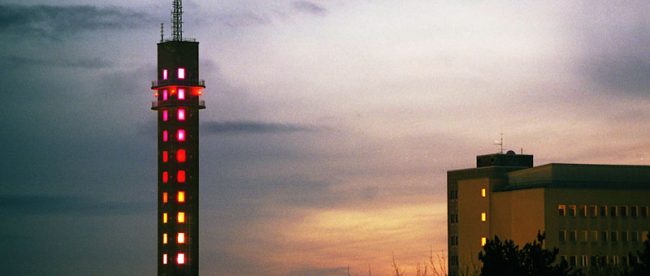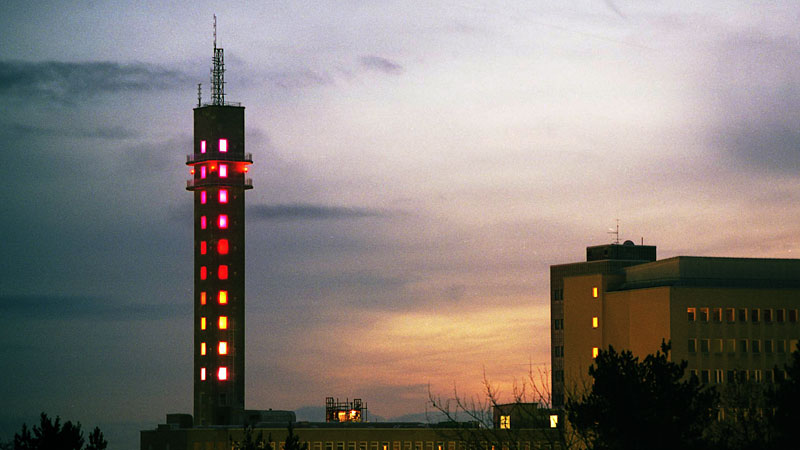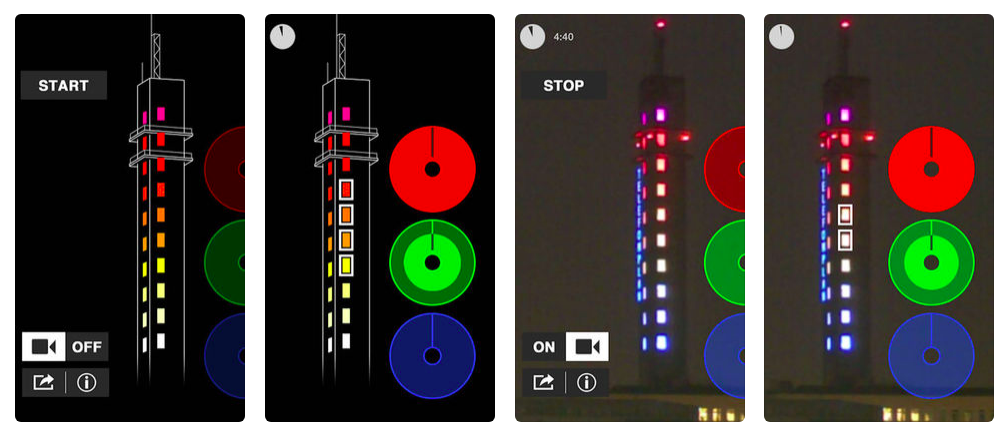The Color Changing Building (and Democracy Experiment)


If you go to the Swedish capital of Stockholm, you may find yourself in the suburban district of Midsommarkransen, and specifically, in a neighborhood called Telefonplan. It’s an area used to be the headquarters of telecom giant Ericsson, and the corporation’s influence is still seen there today, somewhat. During World War II, Ericsson’s global manufacturing efforts were centered in the area; the undertaking was so massive that the company ended up building housing in Midsommarkransen for its workers. Even the name of the neighborhood helps establish Ericsson’s importance to the area; “Telefonplan” translates to “Telephone Square.”
But as the global telecom space shifted, so did Ericsson’s needs. In the 1990s, the company moved its HQ from Telefonplan to Kista, sometimes called Sweden’s answer to Silicon Valley. Over time, the buildings in Telefonplan became less and less busy, and with Ericsson no longer there, many of the old manufacturing and office spaces were converted into commercial and residential spaces. But a different, unique role was in store for Telefonplan Tower, pictured above.
In 2006, a group of artists were able to get access to the tower in hopes of transforming it into a piece of public art. The idea riffed off of a common trend among landmark towers throughout the world, one in which the building’s management will change the colors of the lights to mark holidays and other special occasions. (Here, for example, is a list of the lighting schemes used for the Empire State Building.) This trio of Swedish designers decided to expand on the idea. They used similar technology but added their own special addition, hoping to bring building coloring to the masses. Instead of the landlord deciding what colors the tower would show, random people — anyone, really — could use the tower to paint the night sky.
How? Via your phone. If you go to Colour By Numbers, the official website of the project, you’ll find instructions. The lights go live at sundown local time in Midsommarkransen, and once they do, you can either dial in or use the iPhone/Android apps to adjust the color. Here’s what the app interface looks like:

Don’t have a smartphone? No problem. The official site explains how any phone can color along:
1. Call 020-720 200 and follow the instructions to colour the tower. The call is free of charge and limited to five minutes. Click the “live” tab above to see a live view of the tower as you change colours. From outside Sweden, call +46 8 122 012 35 (please note that this number is not toll-free).
2. Select the floors you wish to colour by pressing the digits 0 to 9, 0 being the bottommost floor, and 9 the topmost. Finish by pressing #. At any time, you can press * to go back and change your selection of floors.
3. Colour the selected floors. Any colour can be created by mixing red, green and blue. The digits 1 to 3, the top row of numbers on your telephone, control red. 1 gives less red, and 3 gives more. The middle row controls green. 4 gives less green, and 6 more. The bottom row controls blue. 7 gives less blue, and 9 more.
But regardless of what you decide to color the tower, you’ve painted the picture that the artists desired. As Atlas Obscura explains, “the creators hope that the work can stand as a statement on the power of democracy and the power of the public.”
That hope continues to this day. The tower is still active — and colorable — as of this writing, or will be once the sun goes down in Stockholm.
Bonus fact: Stockholm’s original spin on a telephone tower was very different — and very ugly. In 1887, the area’s first telecom company built a massive tower to accommodate the city’s phone lines. But we aren’t talking about a few dozen cables. The tower, seen here, had approximately 5,500 phone lines running through it. An eyesore, the tower proved unpopular in the city and was ultimately demolished in 1953. Phone cables, now, predominantly run underground.
From the Archives: The Case of the Missing Magenta: Red, orange, yellow, green, blue, indigo, violet. Where’s pink’s place in the rainbow?
